Labor Shortage Solution Specifying a Factory-Made Roofing Membrane
Workers then weld the top membrane to the bottom membrane using a handheld welder or an automatic welding machine, and silicone roller.
All field-welded seams must be inspected with a tack claw or similar tool (cotter key extractor), and all deficiencies repaired prior to inspection for warranty purposes.
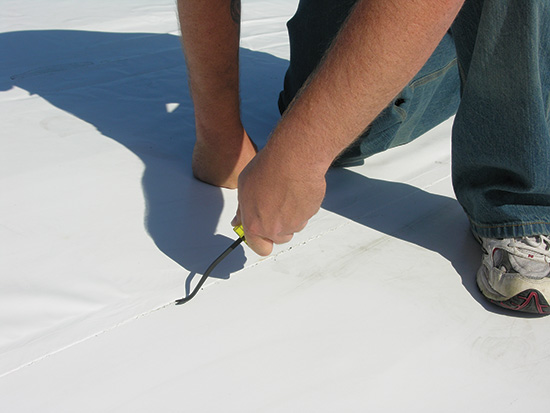
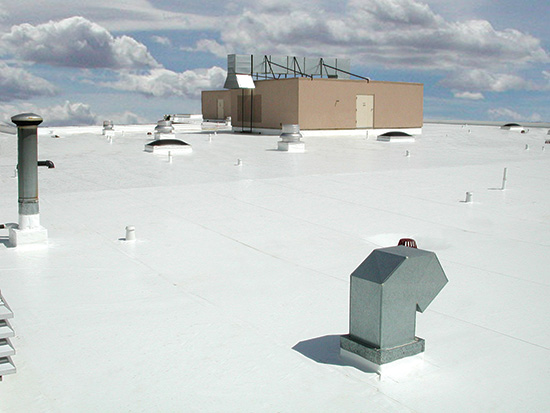
Photo courtesy of Washington State University
Roof Penetrations and Prefabricated Flashings and Accessories
Prefabricated flashings and accessories help ensure a leak-free finished product with less labor time on the roof.
Penetrations are to a roof what windows are to a wall. Both are of extreme value to the function of the building, yet they are vulnerable points in the structures that, if not sealed correctly, create pathways for unwanted, corrosive, and destructive water and air intrusion. Roof penetrations require extremely precise flashing and sealing. Even a slightly flawed installation on the rooftop could have massive implications later on.
As it is with vertical walls, transitions of any kind on a roof require the utmost attention and skills to avoid failure.
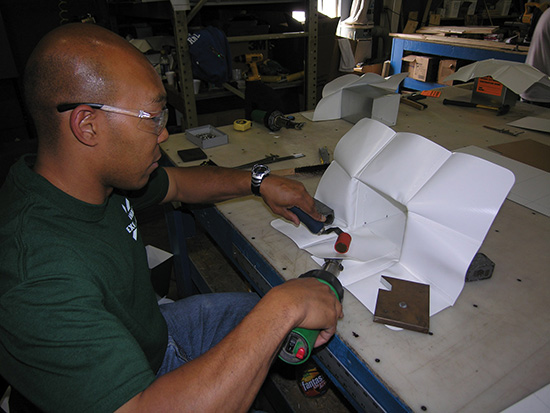
Photo courtesy of Washington State University
A custom prefabricated flashing is made inside a factory-controlled setting.
To save on labor demands on the roof, and to ensure quality control, prefabricated accessories are custom designed to fit each penetration. These include: pipes, drains, curbs, pitch pans, and expansion joints. For roofing systems that are covered under a thorough warranty, prefabricated flashings are often required. Examples are:

Photo courtesy of Duro-Last
Stack flashing
Stack flashings for round penetrations are prefabricated with a reinforced roofing membrane. The installed roofing membrane is mechanically fastened around the penetration, then the flashing is placed, and the seam around the skirt is heat-welded to the roofing membrane for a waterproofing seal.
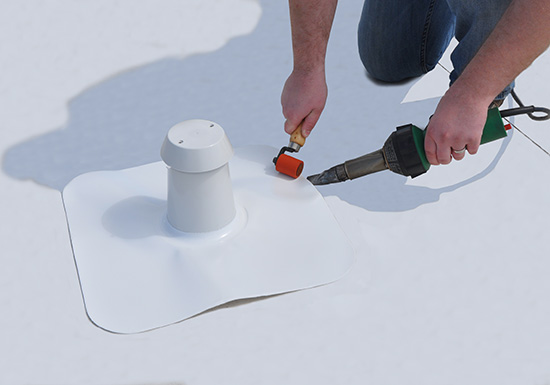
Photo courtesy of Duro-Last
Two-way vent with skirt
Custom fabricated two-way vent flashing with skirt. A two-way vent valve will allow for both exhaust and convective movement of air between breathers, and the cap prevents the entry of rain or snow. But if it is not flashed correctly, it will leak water into the building.
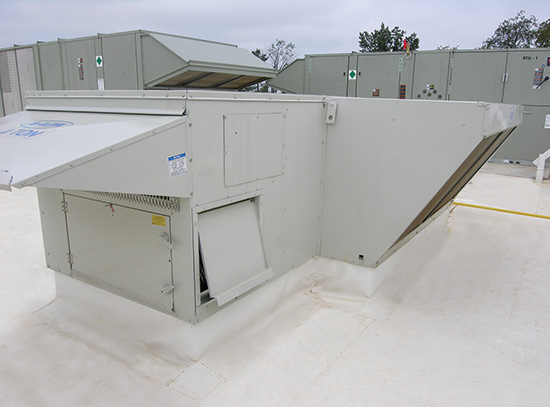
Photo courtesy of Duro-Last
Prefabricated curb flashings
Prefabricated curb flashings are custom made to fit the units and features of each roof. The one-piece design eliminates the risk of several pieces cut for field fabrication and the potential for installation and sealing errors from piece-to-piece.
Other prefabricated accessories for quicker field installation and factory quality control include metal fascia covers, collector boxes with downspout, metal flange scupper, gutter systems, etc.
Conclusion
The shortages in skilled construction are real and many years in the making. While the finest minds in economics, labor, and construction are advocating for changes to build up a skilled workforce, that result will not manifest immediately. That means in a robust building environment, projects may be delayed or, worst yet, be constructed with flawed installation. For roofing, poor installation brings expensive damages, the exact causes of which can be difficult to determine.
Innovations by roofing manufacturers, particularly factory-fabricated roofing systems, can help ease problems caused by skilled labor shortages. Prefabricated membrane systems typically provide four main benefits:
- Factory-welded seams for better first-time quality and fewer callbacks
- Easier transitions for superior waterproofing and aesthetics
- Less labor required for the installation time on the roof
- Cleaner installations with less job-site waste and disruptions
As engineers, architects, installers, and owners realize the continuing benefits of specifying prefabricated buildings systems, the way buildings are constructed may well shift in favor of prefabricated systems for many decades to come.









